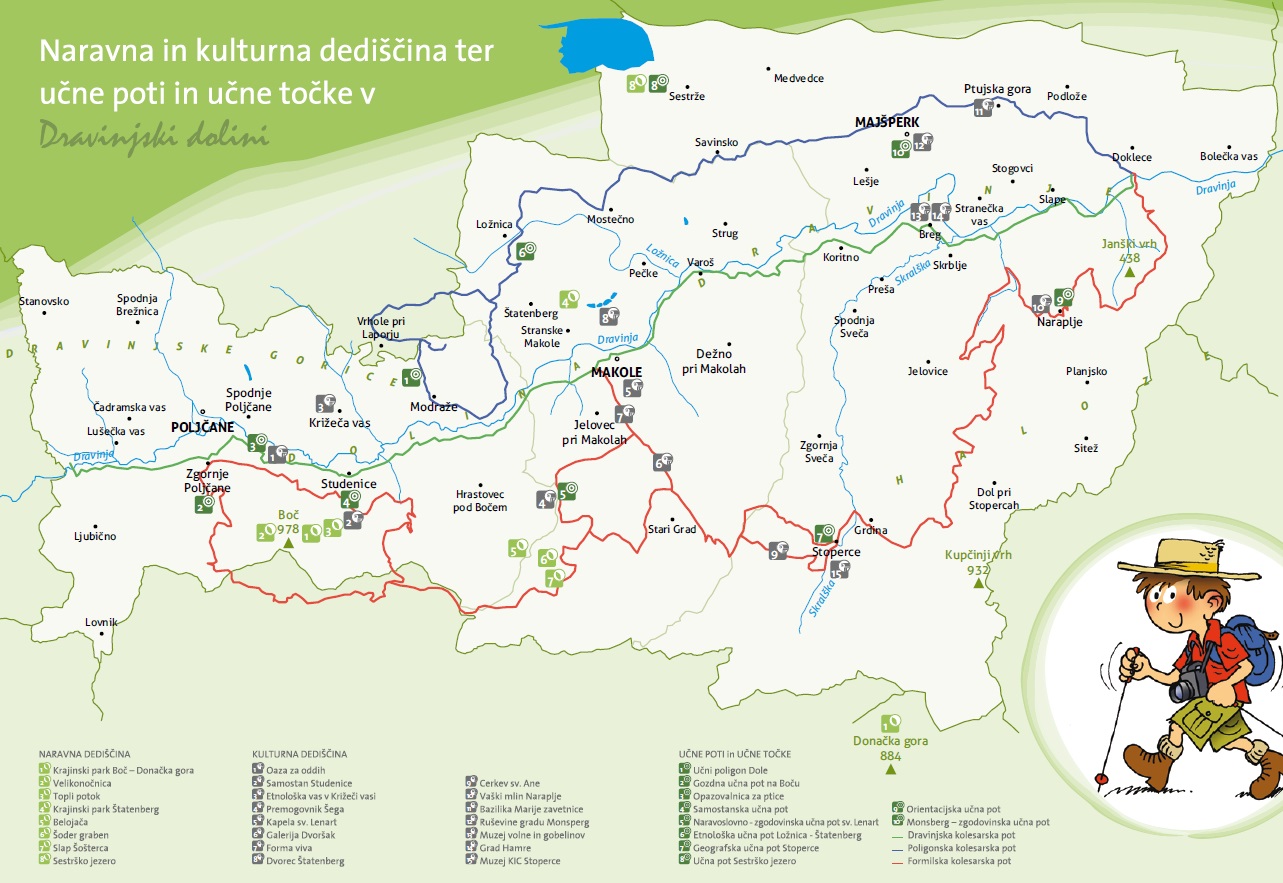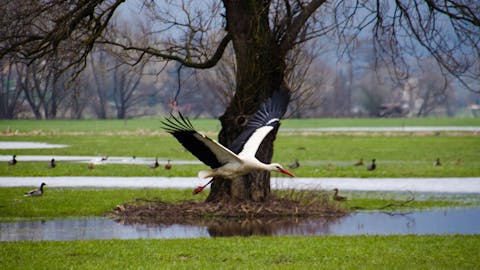
POLJČANE/MAKOLE/MAJŠPERK MUNICIPALITY
Dravinja Valley
The Dravinja Valley is a treasure trove of natural and cultural heritage. The Dravinja River has created a beautiful ecosystem where life in the water intertwines with life on periodically flooded lands. Because the river was not regulated in its central course, it has preserved remarkable natural meanders, accompanied by rich riparian belts of willows and alders.
Kingfishers still nest on the sandy banks; white storks roam the meadows, overflown by dragonflies and marsh fritillaries. The European tree frog, yellow-bellied toad, and common toad attest that they thrive along the vegetated banks of the Dravinja and its tributaries. Oxbow lakes with reedbeds and broadleaf cattails, as well as meadow orchids and the many other natural gems hidden in the magnificent Dravinja Valley, beckon us to explore.

The Dravinja River, which rises below the Pohorje massif and flows into the Drava at Videm pri Ptuju, is one of those rivers that has preserved a natural channel and riparian growth along much of its course. In particular, the river’s meanders in the Municipality of Poljčane provide habitat for many threatened plant and animal species.
The riparian vegetation, with mighty old trees leaning out over the water, is home to a beautiful yet threatened bird species in Slovenia—the kingfisher. Floodplain river meadows, where hedgerows, solitary trees, reedbeds, and oxbow lakes have been preserved, offer a living space for the striking white stork, which has one of Slovenia’s strongest populations in the Dravinja Valley. In spring, a loud chorus of green frogs resounds from the river ponds, while in summer meadows you can still encounter dragonflies and several conserved butterfly species.
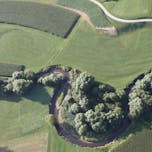
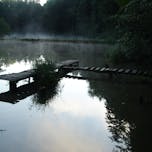
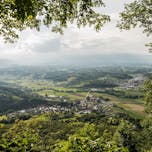
The municipalities of the Dravinja Valley are linked by the Dravinja River, which has shaped a picturesque landscape with many natural assets since times past. Because the municipalities of Makole, Majšperk, and Poljčane share not only their location and natural heritage but also a similar history and cultural heritage, these common features provided the basis for establishing cycling, educational, and hiking trails across the Dravinja Valley. The established routes are marked with educational boards and waypoints, and equipped with benches, tables, and information points. The themed educational trails in the Dravinja Valley are suitable for all ages.
